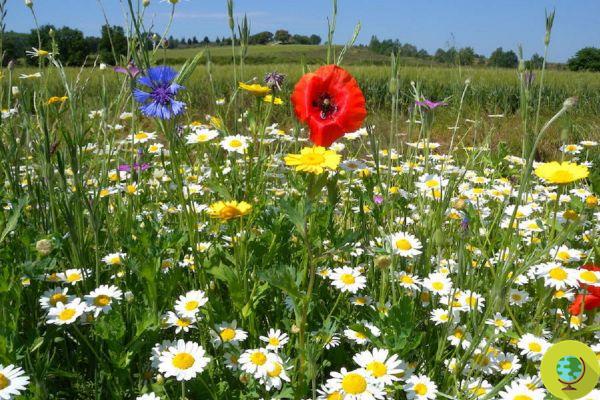
Flowers "communicate" with insects not only with shapes and colors, but also through perfume. And they do it by applying very specific strategies. I study
Flowers "communicate" with insects not only with shapes and colors, but also through perfume. And they do so by applying very specific, specialized or generalist strategies.
The more the aromas are simple and made up of few aromatic components, the more they are aimed at a specific category of pollinators.
Bees are attracted to flowers with electrical signals
If, on the other hand, the fragrance of the flowers has a more complex bouquet, the olfactory message will indistinctly attract a wide range of insects.
The discovery of this "fragrant language of flowers" comes from a study carried out at the University of Pisa and published in an article in the journal "Basic & Applied Ecology".
Researchers from the departments of Agricultural, Food and Agro-environmental Sciences and Pharmacy conducted the experimentation on fifteen species of wild flowers - including cornflower, gittaione, larkspur, nigella, wild carnation - and related pollinators, such as bees, bumblebees, diptera and butterflies.
"The specialist and generalist interactions - underlines Stefano Benvenuti, researcher at the University of Pisa - therefore define the two models of co-evolution flowers insects and whether the specialist strategy is more effective from the point of view of gene flow, as pollinators transfer pollen almost exclusively within the same species, however, it is certainly the one most at risk. This is because pollination depends on a fragile dependence on a few species of pollinators whose simultaneous presence with the blooms is unfortunately further threatened by the ongoing climate changes ".
Specialist flowers have, in fact, certain insects as "vectors" of pollen, suitably attracted by perfumes dedicated to them, which in turn have co-evolved mutualistically, developing "tomentosity", ie down, for the transport of pollen and systems. elongated jugs to reach the nectar in semi-closed or particularly elongated corollas.
The generalist flowers, on the other hand, do not select insects, accepting most of the pollinators (which, however, prevents them from maximizing the efficiency of pollen transfer, because most of them are also transported on flowers of different species).
"Understanding these particular interactions - concludes Benvenuti - means defending biodiversity and ultimately also preserving the beauty of the rural landscapes that surround us, such as ours in Tuscany, renowned all over the world for their uniqueness".
As proof that insects and flowers have the longest "love" story in the world.
Sources: Science Direct, University of Pisa
Read also:
Bumblebees "nibble" on plants to make them bloom faster, surprising scientists
Bees and flowers, theirs is the longest love story in the world (but now it risks ending)


























